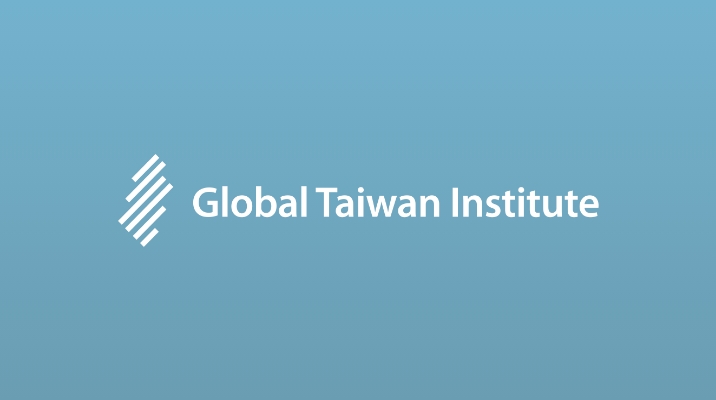In August this year, the Global Taiwan Institute (GTI) gathered ten analysts in Washington, DC as the “US-Taiwan Economic Relations Working Group” to discuss the challenges and opportunities facing the US-Taiwan economic relationship. This article compiles thoughtful insights from the working group, which convened for a one-day workshop to outline key priorities for policy makers in both the United States and Taiwan with the goal of ensuring continued benefits from the US-Taiwan economic relationship in multiple dimensions.
The workshop took place on the heels of major developments in the US-Taiwan relationship. Earlier in the month, US President Donald Trump’s administration announced that Taiwan would be subject to a “temporary” 20 percent tariff while negotiations were ongoing–a relatively higher rate than that of other trade partners in the region. Despite this rate being lower than the initial 32 percent, and only applying to about a quarter of Taiwan’s US-bound exports, many in Taiwan were quick to criticize Taiwan President Lai Ching-te’s (賴清德) administration for failing to secure a better deal. For further context, the announcement also followed the Democratic Progressive Party’s (DPP, 民進黨) failure to secure their intended outcome from the “Great Recall Movement,” as well as reports that President Lai’s possible transit through the United States had been cancelled. Although the cause of the latter is still debated, such an environment has directed immense pressure toward Lai from an already US-skeptical Taiwanese populace to secure a more equitable tariff rate.
Given these developments, GTI’s US-Taiwan Economic Relations Working Group set out to reframe the US-Taiwan economic relationship and chart its course for the coming years. In the August workshop, the group developed five central priorities: 1) lowering the trade deficit; 2) mitigating the impacts of the tariffs; 3) focusing on new areas of cooperation; 4) navigating domestic pressures; and 5) planning for long-term contingencies.
Priority 1: Lowering the Trade Deficit
At the start of the workshop, most analysts identified the biggest challenge in US-Taiwan economic relations to be the ongoing negotiations to balance the trade deficit between the two sides in order to secure a lower tariff rate. As a group, workshop analysts cited “reducing tariffs and other trade barriers” as the number one priority for the United States when it comes to economic engagement with Taiwan.
Given the high demand for artificial intelligence (AI) and semiconductor technologies, we can assume that demand for Taiwan’s exports will not decline in the United States. While Taiwan negotiates a better tariff rate, Taiwan should instead focus on what it can purchase from the United States in order to balance bilateral trade. Throughout the workshop discussions, participants frequently mentioned areas of opportunity that included arms purchases and other defense industry cooperation, natural gas, and additional semiconductor investments.
While the United States continues to clear the backlog of arms packages to Taiwan, Taipei should employ further arms purchases as a method for lowering the bilateral trade deficit. For example, even as Taiwan continues to nurture its domestic drone industry, Taiwanese companies can work with American manufacturers or at another point in the supply chain to build an integrated manufacturing ecosystem involving imports from the United States.
On the natural gas front, President Lai has noted that US liquefied natural gas (LNG) purchases are not only a focus of the tariff negotiations, but also a priority for Taiwan’s energy resilience considerations. In fact, Alaska Governor Mike Dunleavy announced in early August that a deal with Taiwan to purchase six million tons of LNG was close to finalization, although questions remain regarding whether the pipeline will be completed by the projected date of 2030.
When asked for the biggest area of opportunity in the US-Taiwan economic relationship, three analysts cited US investment in the semiconductor industry as being the most promising. Beyond reducing tariffs, the majority of analysts agreed that technology cooperation and supply chain resilience should be a priority in the United States’ economic relations with Taiwan. While inbound investment will not directly affect the trade deficit, additional Taiwanese semiconductor investments into the United States seem to be a priority for the Trump Administration in negotiations to lower the tariff rate. According to President Trump, semiconductor companies with commitments to invest in the United States will be exempt from a proposed tariff of 100 percent on semiconductor imports. The proposed 100 percent tariff is especially significant considering that semiconductors and other electronics were temporarily fully exempt from US tariffs, but the outcome of the Section 232 investigations could change these standards. Taiwanese chipmaking giant Taiwan Semiconductor Manufacturing Co. (TSMC, 台灣積體電路製造股份有限公司) will likely remain exempt under these circumstances. This may not be the case, however, for many of Taiwan’s smaller firms that make up Taiwan’s robust chip ecosystem, which have less capital and flexibility to expand operations on US soil.
Priority 2: Mitigating the Impacts of US Tariffs
Amid ongoing uncertainty and risk, Taiwan’s small and medium enterprises (SMEs)—which make up much of Taiwan’s economy—have remained vulnerable. In response to the US reciprocal tariff policy, President Lai announced a special budget increase at the beginning of August to assist Taiwan’s SMEs in “responding to this new tariff policy.” As of August 29, the Legislative Yuan (立法院) passed provisions for an NTD 10,000 cash handout program aimed at “economic and social resilience” in light of the tariffs.
One workshop attendee raised the point that trade barriers can incentivize mergers, in that smaller technology firms will seek to combine with larger enterprises that are expected to be exempt from tariff forces. However, the analysts determined that such a trend is unlikely. Instead, smaller enterprises in the semiconductor industry are likely to invest in pre-existing US-based ecosystems, like that of Phoenix, Arizona.
Other questions surrounding the relocation of production were also discussed, such as the possibility that Taiwanese firms may move to other countries (for example, Mexico or Southeast Asia) where tariff rates are lower in relative terms. The analysts noted that such shifts are unlikely at this point for several reasons: 1) the initial wave of Taiwanese manufacturing departing China for Taiwan or Southeast Asia was already composed of companies willing and able to move, so another wave is unlikely at this time; 2) the tariff rates in the region are roughly similar; and 3) the move would be costly and would take years, by which time US tariff rates will likely have changed.
As such, given that tariff negotiations could have long-term implications, Taiwan should focus on supporting its small and medium enterprises as they navigate uncertainty.
Priority 3: Focusing on New Areas of Growth
As evidenced by fractious US-Taiwan trade negotiations, the diversification of Taiwan’s economy remains a key step to resiliency. Several areas of opportunity can serve as a new frontier for US-Taiwan cooperation outside of semiconductors: including AI regulation, batteries, the critical minerals supply chain, and drone production.
Four analysts specified AI technology regulation and investment as the biggest area of opportunity in US-Taiwan economic relations. Whether in the form of more integrated hardware-software partnerships with Taiwan’s AI-optimized semiconductor manufacturers or on joint standards-setting, a shared vision for the future of AI would be to the benefit of both the United States and Taiwan. In early August, a bipartisan group of US lawmakers introduced a bill to enhance defense technology cooperation with Taiwan in multiple areas, including in AI, drones, and chips. Recent reports also note that Taiwan’s National Chung-Shan Institute of Science and Technology (國家中山科學研究院) has signed a memorandum of understanding with US-based Anduril industries, which signals a direct collaboration on the use of AI for defense technologies. These developments could serve as a valuable foundation through which to expand the pre-existing US-Taiwan AI partnership.
Another opportunity for collaboration between the United States and Taiwan could be found in the field of battery technology innovation. Considering the bipartisan support in the United States for investment in such technology—as well as the United States’ general lag in the industry—Taiwan could contribute its expertise in development and manufacturing. Such collaboration would also be significant in the context of US-China competition, given that China leads the world in battery manufacturing, with nearly 85 percent of global battery cell production capacity.
China’s dominance on critical minerals also presents a unique opportunity for US-Taiwan cooperation. While Taiwan’s exact role remains uncertain (as it does not necessarily offer specific expertise or resources in the area), one possible opportunity may be to look at Taiwan’s manufacturing advantages, which could be used in the refining process. More environmentally-conscious methods of refinement are also an area for growth that Taiwan can explore.
Priority 4: Navigating Domestic Pressures
Domestic political strife in Taiwan and the United States may not be the biggest challenge facing the economic relationship, but it is shaping the context of engagement. Most analysts in our working group noted in initial polling that Taiwan’s domestic political challenges would likely spill over into its economic relationship with the United States (five analysts responded “strongly agree”), but the recent passage of the special budgetary act signals that the Legislative Yuan is heading in the right direction. Under the Trump Administration, the United States has evolved beyond Biden-era discussions of export controls and industrial policy toward a focus on rebalancing the trade deficit, which fundamentally limits Taiwan’s bargaining space. The Lai Administration has been cautious to release details related to the ongoing negotiations—a move perhaps intended to maintain confidence in Taiwanese industries—but the Trump Administration has recently announced that a potential agreement has been reached.
If both Taiwan and the United States can skillfully navigate domestic politics, key developments could take US-Taiwan economic relations to the next level. In the United States, finding creative ways to pass the stalled double taxation agreement, which has bipartisan and private sector support, would be key to lowering barriers to US-Taiwan investment. In Taiwan, possible revisions to the Public Debt Act (公共債務法) could shift resources, changing the landscape for SME support, technology research and development, and defense procurements.
Priority 5: Planning for Long-Term Contingencies
Planning for a contingency in the Taiwan Strait should be viewed as a key economic consideration for both the United States and Taiwan. Building up deterrence through speedy arms procurements, enhancing private sector resilience and communication, and making necessary investments in energy infrastructure should all be long-term priorities in the US-Taiwan relationship. The private sector will need to navigate the sensitivity of contingency discussions, and a hesitancy on the part of some political actors to create public panic through general discussions about resilience. This can be achieved through a focus on sectoral strength, supply chain integrity, and transparent communication–rather than discussions exclusively focused on a blockade or armed conflict.
The main point: Considering recent developments in the US-Taiwan economic relationship, GTI convened a US-Taiwan Economic Relations Working Group in August 2025, featuring ten Washington-based experts in economics and trade. The working group formulated five key areas of priority for the next era of US-Taiwan economic partnership: 1) lowering the trade deficit; 2) mitigating the impacts of the tariffs; 3) focusing on new areas of cooperation; 4) navigating domestic pressures; and 5) planning for long-term contingencies.





